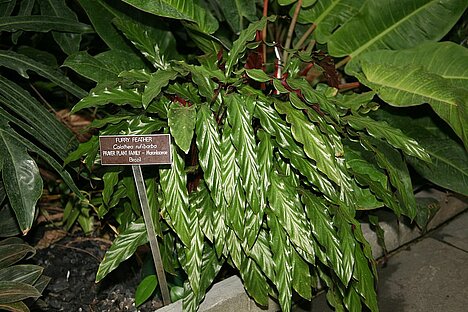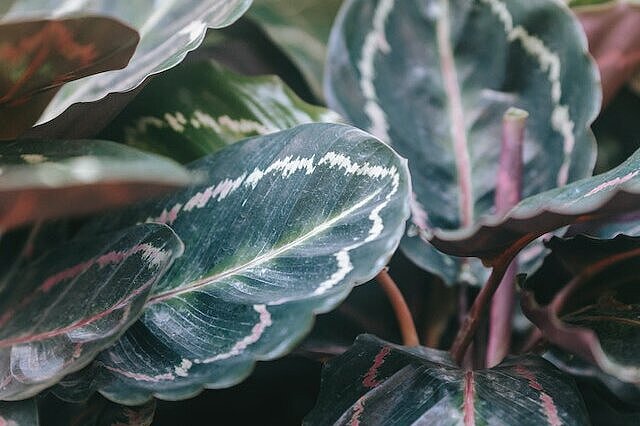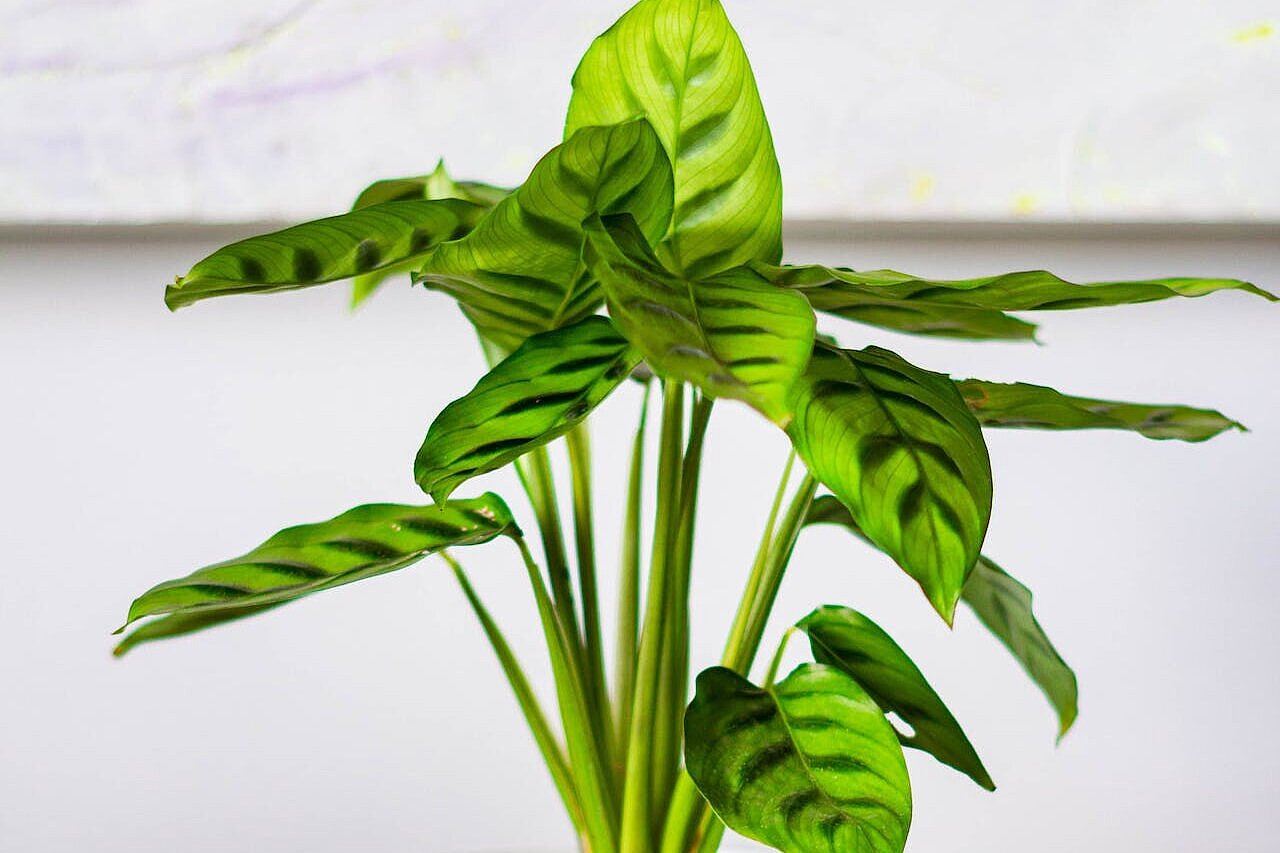Calathea rufibarba

What is Calathea rufibarba?
Calathea rufibarba is an evergreen perennial that usually grows between 30 and 60 centimetres tall indoors. Its leaves are long, narrow and lanceolate in shape and have a beautiful wavy structure. The upper side of the leaves is dark green, while the underside of the leaves and the stem are reddish-purple in color. The botanical name rufibarba means "red beard" and refers to this coloration.
The flowers of Calathea rufibarba are basket-shaped and bright yellow. They usually appear in late winter or spring when the plant is feeling well. Although the flowers are not very large, they are very decorative and give the plant an exotic charm.
How to care for Calathea rufibarba?
Calathea rufibarba is a demanding houseplant that requires high humidity, a warm temperature and a bright, but not sunny, position. You should also water, fertilize, prune and repot it regularly. Here are some tips for caring for Calathea rufibarba:
- Location: Choose a bright but sunny to semi-shady spot for your Calathea rufibarba. Direct sunlight can burn or bleach the leaves. The temperature should be between 22 and 30 degrees Celsius during the day and not fall below 18 degrees Celsius at night. In winter, you can keep the plant a little cooler, but not below 15 degrees Celsius.
- Humidity: Calathea rufibarba likes a high humidity of at least 60 percent, preferably over 70 percent. To achieve this, you can spray the plant regularly with lime-free water or place it on a tray filled with water and gravel or expanded clay. Make sure that the pot is not standing in water. Alternatively, you can also place the plant in the bathroom or in a heated conservatory.
- Substrate: Use a high-quality potting soil for your Calathea rufibarba that is humus-rich, nutritious and well-drained. The pH value should be between five and six. You can also mix in some peat or perlite to improve the structure.
- Watering: Water your Calathea rufibarba regularly, but not too much. The root ball should always be slightly moist, but never wet or dry. Excess water should be poured off immediately to avoid waterlogging. Rainwater or lime-free tap water is best for watering.
- Fertilize: Fertilize your Calathea rufibarba once a month during the growth phase from April to September with a liquid fertilizer for green plants. In winter, you can reduce or stop fertilizing altogether.
- Repotting: You should repot your Calathea rufibarba every two to three years in spring. Choose a slightly larger pot with a drainage hole and fill it with fresh soil. Place the plant so that the root collar is no deeper than before. Press the soil down lightly and water the plant well.
- Pruning: Cut back your Calathea rufibarba in spring to shape it. Shorten the shoots by about a third of their length. Also remove withered flowers and dried or damaged leaves. Always cut just above a leaf node or branch. Use sharp and clean scissors to avoid bruising.
Is Calathea rufibarba poisonous to dogs?
Calathea rufibarba is not poisonous to dogs, but it can cause gastrointestinal problems in sensitive animals if eaten. You should therefore place your Calathea rufibarba out of your dog's reach or train him not to nibble on the plant.
Calathea rufibarba is an attractive houseplant that brings a tropical flair to your home with its wavy leaves and yellow flowers. Caring for Calathea rufibarba requires some sensitivity, but if you create the right conditions, you will be rewarded with a healthy and flowering plant. Calathea rufibarba is not poisonous to dogs, but you should still make sure that your four-legged friend does not eat the plant.
Properties 2
Are you looking for other ingredients with a specific property?
Just click on them to find more.
If you notice any signs of hypersensitivity or poisoning in your dog, you should see your vet immediately. We are not a substitute for a vet, but we try to be as accurate as possible. Every dog reacts differently and we recommend you get a second opinion or consult your vet if in doubt.
Stay healthy and take good care of your four-legged friend!😊
Similar to Calathea rufibarba
Calathea crotalifera is an ornamental foliage plant from the Marantaceae family. It is native to Central and South America and the Caribbean islands, where it grows in humid forests. It is also...
Calathea Medallion is a cultivated form of Calathea roseopicta, a tropical plant from the Maranthaceae family. It originates from South America, where it grows in the shade of the rainforest. Its...
Calathea zebrina is an evergreen perennial that grows from rhizomes and reaches a height of up to one meter. The leaves sit on long, fleshy stems and are oblong-oval in shape. They can grow to over...
Calathea roseopicta is a demanding houseplant that needs plenty of moisture, warmth and light. It should be placed in a bright, but not directly sunny spot, otherwise the leaves may burn. The...



